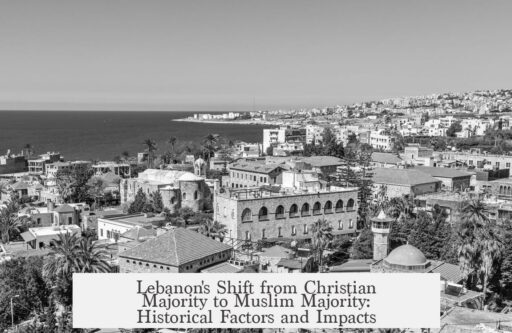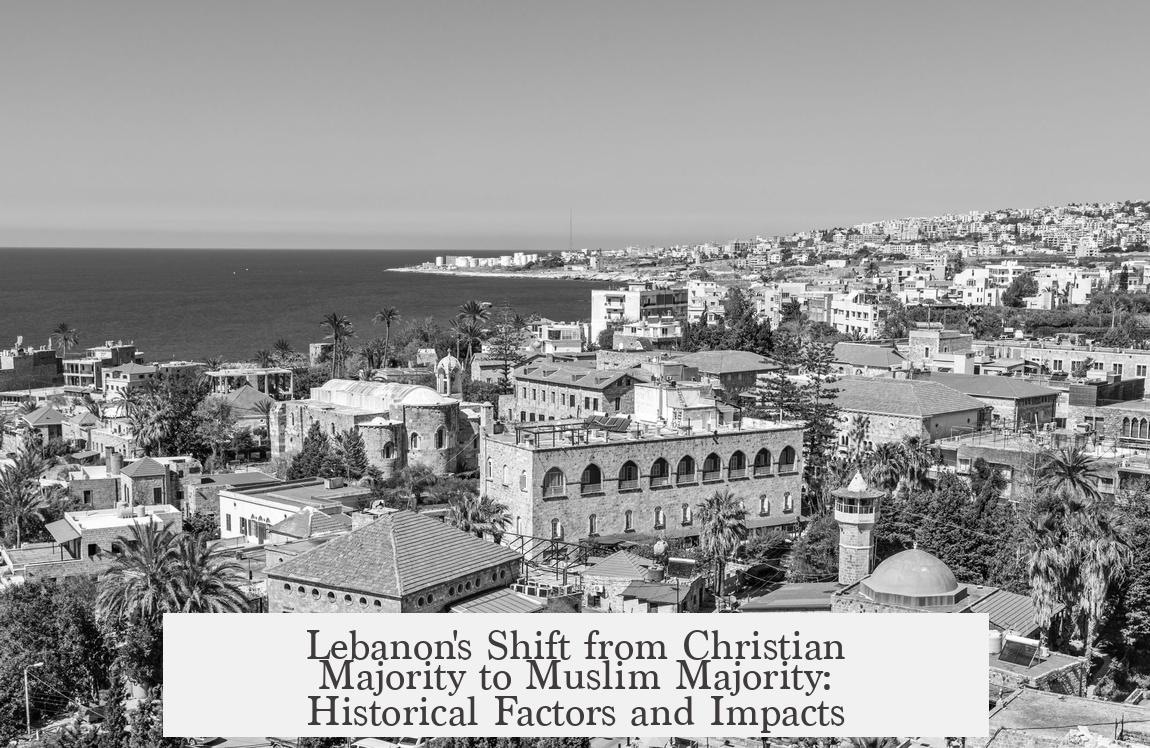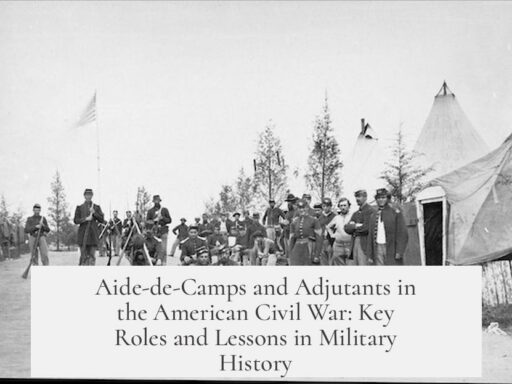Lebanon shifted from a majority Christian to a majority Muslim country due to a complex interplay of historical violence, emigration patterns, demographic changes, altered borders, and political dynamics from the 19th century through the Lebanese Civil War.
The 1932 census, the last official population count, recorded Christians as 53% of the population. However, this figure is subject to doubt because the census was conducted under a Christian-led government with reasons to portray Christians as the majority. Despite the official data, scholars acknowledge a long-term trend of a shrinking Christian proportion beginning in the Ottoman era.
During the 19th century, Lebanon experienced sectarian violence, notably the 1860 civil war where thousands of Maronite Christians were massacred. The aftermath brought French intervention and the establishment of the autonomous Mount Lebanon Mutasarrifate. This mountainous region was poor, and Christians faced Ottoman suppression and insecurity, prompting many to emigrate.
Christian emigration began early. Christians, with cultural and religious ties to Europe and the Americas, emigrated in larger numbers. This exodus formed the Lebanese Christian diaspora. Emigrants often sent remittances back home, and some returned wealthy, but many left permanently. This migration reduced the Christian population proportionally, affecting Lebanon’s demographic make-up long-term.
Christian communities became relatively affluent in Mount Lebanon, while Muslim communities remained poorer. Wealth differences impacted birth rates. Generally, higher income groups have lower birth rates. Thus, Christian birth rates declined as their affluence grew, while Muslim communities—especially Shiites—maintained higher birth rates due to socioeconomic conditions and social conservatism.
World War I dealt a severe blow to Lebanon, especially Mount Lebanon. Ottoman policies worsened famine and hardship, causing mass deaths and further migration. After the war, the French mandate enlarged Lebanon’s borders, creating “Greater Lebanon.” The newly added territories had larger Muslim populations, which shifted the religious balance toward Muslims within the new state boundaries. These borders remain today.
Between the 1930s and Lebanon’s independence in 1943, emigration slowed but demographic shifts continued. Muslims, particularly Shiites, grew faster due to higher birth rates and lower wealth levels, increasing their share of the population. Christians maintained political dominance despite losing numeric majority, creating tension.
By the 1960s, the Muslim community had become the majority population, though Christians retained political control based on outdated accords. Christian fears of losing political autonomy and concerns over Muslim pan-Arab sentiments fueled resistance to power sharing. This fueled unrest and demands for political reform by Muslims.
The 1975 outbreak of the Lebanese Civil War intensified demographic changes. The conflict involved multiple sectarian militias and external factions, including the Palestinian Liberation Organization. Large numbers of Lebanese fled violence. Christians emigrated more because of better financial resources and international connections. This disproportional Christian exodus reduced their population share drastically.
In summary, Lebanon’s transformation from a Christian majority to a Muslim majority reflects:
- Biased early census and skepticism over initial Christian majority figures.
- 19th-century sectarian violence and mass Christian emigration under Ottoman rule.
- Socioeconomic disparities lowering Christian birth rates relative to Muslims.
- Post-WWI creation of Greater Lebanon incorporating more Muslims.
- Continued higher Muslim birth rates through the mid-20th century.
- Political unrest and civil war causing disproportionate Christian emigration.
| Factor | Effect on Demographics |
|---|---|
| 1932 Census Bias | Overstated Christian majority; baseline for demographic tracking |
| Ottoman-era Violence | Christian casualties and fear drove emigration |
| Christian Emigration | Reduced Christian population share permanently |
| Socioeconomic Status & Birth Rates | Lower Christian fertility rates compared to Muslim communities |
| Post-WWI Border Expansion | Inclusion of Muslim-majority areas increased Muslim demographic |
| Mid-20th Century Trends | Muslims became majority; Christians retained political power |
| Lebanese Civil War | Mass Christian emigration, cemented Muslim majority |
The demographic shift impacts Lebanon’s political and social realities today. Recognizing the historical stages helps understand current sectarian dynamics and challenges in power sharing.
- Lebanon’s majority Muslim status results from long-term demographic, political, and social changes linked to emigration and birth rates.
- Colonial-era border changes incorporated more Muslims into Lebanese territory, shifting religious balance.
- Conflict-driven emigration disproportionately reduced the Christian population.
- Socioeconomic factors led to differing birth rates between communities.
- Political power struggles complicated demographic realities during the 20th century.
Why did Lebanon go from majority Christian to majority Muslim?
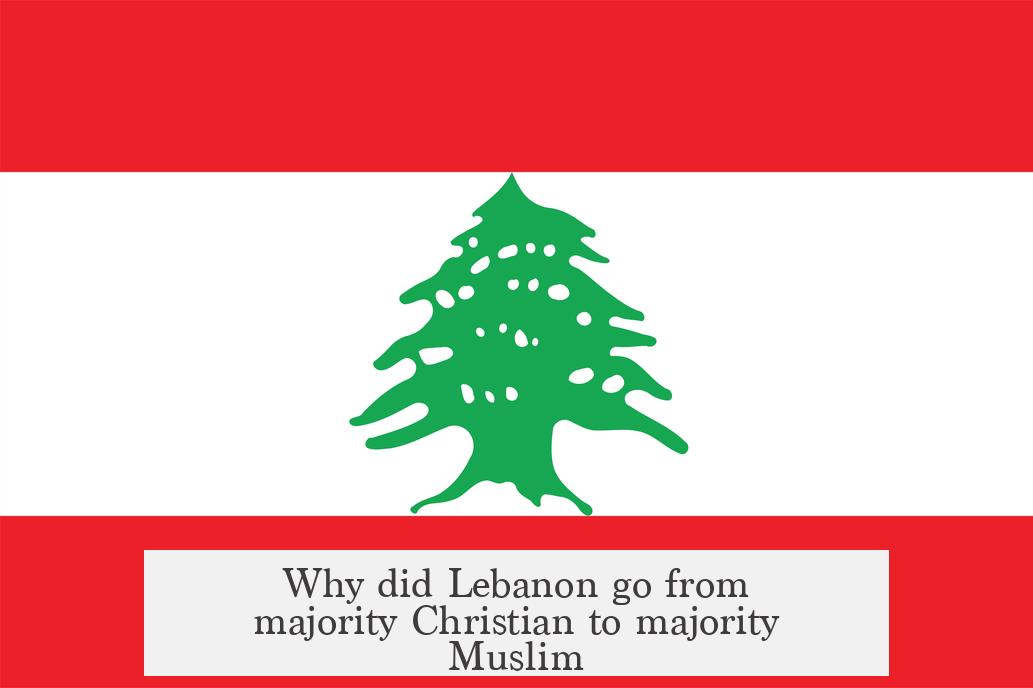
Lebanon’s shift from a majority Christian country to a majority Muslim one results from a long, complex process involving historical conflicts, changing borders, socioeconomic trends, and emigration patterns. It’s no overnight miracle or sudden population explosion. Instead, it’s a story woven through centuries, marked by violence, politics, and cultural shifts.
Let’s unpack this fascinating, often painful demographic journey.
The 1932 Census: A Starting Point With a Grain of Salt
According to the 1932 Lebanese census, Christians made up around 53% of the population—a narrow majority. But here’s the kicker: that census might not tell the whole truth. It was conducted by a Christian-led government, which surely had an incentive to lean the numbers their way.
Even so, the census hints at a crucial fact: Lebanon was once predominantly Christian or at least very close to an even split. Before this count, during the Ottoman era (roughly early 16th century to early 20th century), the Christian population was indeed more prominent. Yet, the shift toward a Muslim majority had already begun, slowly and steadily.
19th Century Violence and Emigration: The Exodus Begins
Here’s a turning point that often gets sidelined: the 19th century introduced brutal moments like the 1860 civil war, where thousands of Maronite Christians were massacred. Talk about trauma shaping history.
The aftermath? The Ottoman Empire bowed under pressure from France and created the Mutasarrifate of Mount Lebanon—a semi-autonomous region meant to protect Christians better.
But conditions remained tough. Economic hardship and fear of Ottoman control pushed many, especially Christians, to leave Lebanon. They didn’t just jettison their worries; they left physically. This mass emigration was unique because Christians often found it easier to settle in Europe and the Americas, thanks to shared cultural and religious backgrounds.
What’s more, some of those emigrants sent money back home or even returned richer and with new ideas. But the immediate effect was a reduced Christian presence within Lebanon. So emigration wasn’t just a fleeting demographic hiccup—it shifted the very makeup of the land itself.
Affluence and Birth Rates: Socioeconomic Divides Shape Families
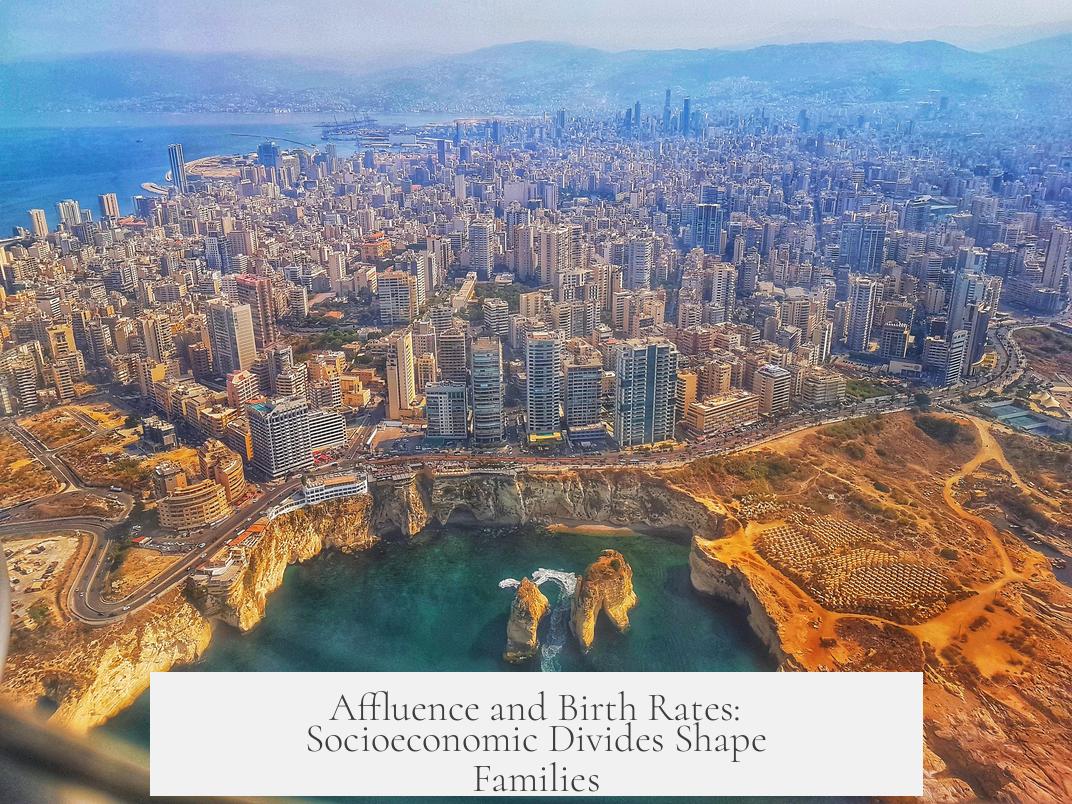
It’s not just war and fleeing that shape population trends. Here’s a less dramatic but equally decisive factor: economics. Christians, especially the Maronites, historically became more affluent than their Muslim neighbors.
Now, why does that matter? Because wealthier communities generally have fewer children. They invest more per child, pursue education, and often delay starting families.
Meanwhile, Muslim populations—frequently poorer and more socially conservative—had higher birth rates. This demographic dynamic naturally causes one community to expand faster over time. So, the Christian community’s affluence, while advantageous in many ways, ironically contributed to slower population growth.
World War I and the Birth of Greater Lebanon: Borders Rewritten
The devastation of World War I hit Lebanon hard, especially Mount Lebanon where most Christians lived. Ottoman policies worsened the suffering, leading to deaths and a fresh round of emigration.
After the war, the victorious powers reshaped the map. The small Mutasarrifate expanded into “Greater Lebanon,” adding borders that today define the country’s shape.
Here’s the key: the newly added regions had more Muslims than Christians. This border expansion didn’t just change maps; it altered demographics dramatically, increasing the Muslim share of the population.
Evolving Demographics Through Mandate and Independence
Despite the last official census in 1932, the demographic balance was tipping. Under French Mandate and following Lebanon’s independence in 1943, emigration slowed. yet, the population shifts continued.
The Muslim population, boosted by higher birth rates, especially among Shiites, began growing faster. Meanwhile, lower Christian birthrates meant slower growth. The changes stayed subtle but steady.
Political Tensions and the Civil War: Catalysts for Change
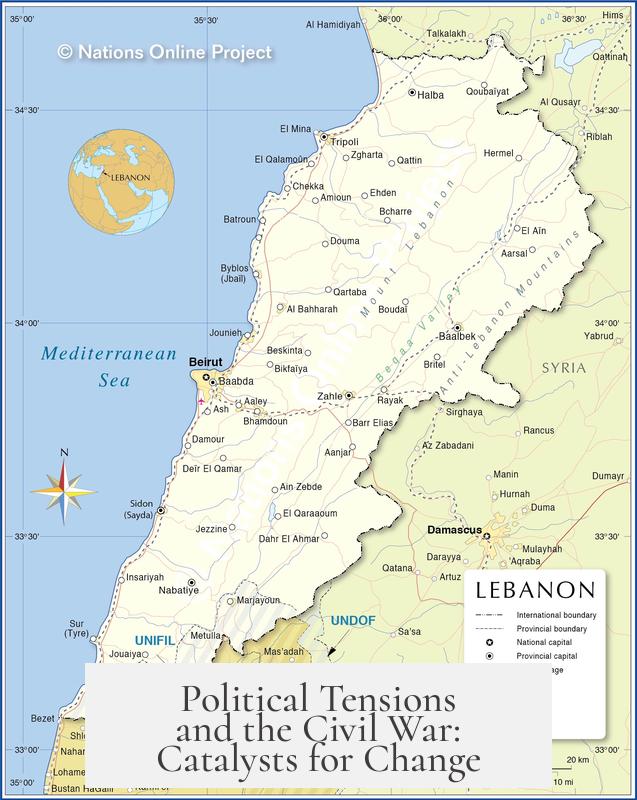
By the 1960s, the writing was on the wall: Christians were no longer the majority. But politics moved slower than demographics.
Christians held disproportionate political power and resisted ceding control. Their fear? A Muslim-led Lebanon might lose its independence, as many Muslim parties supported pan-Arabist ideals—meaning close ties with larger Arab neighbor states.
The tension simmered until 1975 when conflict exploded. The Lebanese Civil War devastated the country. The entry of the Palestinian Liberation Organization (PLO) added fuel to the fire.
This chaos forced more people to emigrate. Guess who left in larger numbers? Yes, the wealthier Christians again. They had the means to leave and did so in big waves, further reducing their share of the population inside Lebanon.
When peace finally returned, the Muslim majority was firmly entrenched.
Summary and Reflections: What Does This Mean Today?
Lebanon’s demographic transformation isn’t a simple curve or single cause. It’s a mosaic formed by biased data, violence, economic realities, territorial changes, and political upheaval.
- Biased census data masked the initial demographic state but didn’t halt the underlying trends.
- Violence and persecution, especially during Ottoman times, pushed many Christians abroad.
- Socioeconomic status influenced birth rates, with wealthier Christians having fewer children.
- Post-WWI border changes incorporated more Muslim-majority areas into Lebanon.
- Civil war and political tensions accelerated Christian emigration, solidifying the Muslim majority.
One question remains: how does this demographic shift affect Lebanon’s future?
Given Lebanon’s unique sectarian political system, demographic realities shape power sharing and governance. The country’s challenges often stem from balancing the interests of diverse religious groups. Understanding these demographic shifts provides key insight into the present political landscape and possible paths forward.
In Lebanon’s case, history isn’t just in books; it lives in every street and tribe. Recognizing the layers behind that population shift offers a deeper appreciation, moving beyond simplistic explanations. It tells a story of resilience, adaptation, and the complex dance of identity in a land shaped by time and turmoil.
